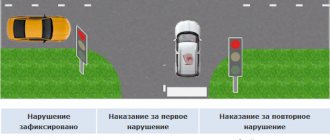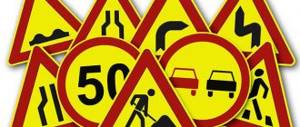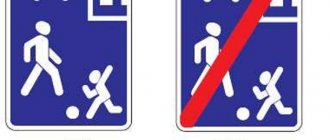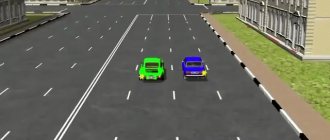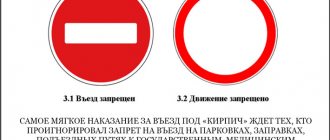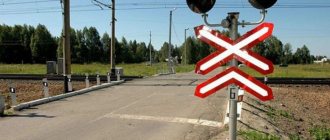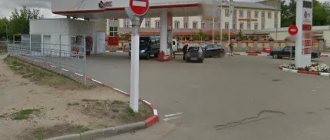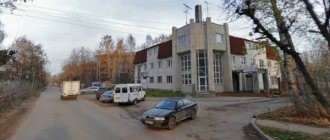Despite the fact that motorists are fairly well versed in traffic light regulations, the meaning of some signals still leaves doubts. Many questions are associated with the presence of an additional board in which the arrow sign is located.
Motorists often doubt whether it is possible to enter the PCH intersection if only the green signal of the main display is on. In this case, the additional section does not display any instructions. What should a driver do if he expects to start a maneuver when the arrow is not lit, and end when the additional section indicator is on?
Fine for driving under a switched off traffic light
The Code of Administrative Offenses presupposes an unambiguous system of penalties for crossing a dangerous section of the road under a non-flammable permitting order of an additional section.
According to Article 12.12, the punishment for this offense is as follows:
- in case of primary violation of the discussed traffic regulations - a fine of 1000 rubles;
- if you drive through the PCH intersection again with the arrow not lit - a fine in the amount of 5 thousand rubles or confiscation of the driver’s license for a period of 4 to six months;
- when driving through an intersection in the forward direction under the indication of a lit arrow for a turn maneuver - a fine of 500 rubles.
The motorist must clearly know the direction of his movement and think through the route of the trip in advance. In this case, care must be taken to turn on the turn signal in a timely manner (in accordance with paragraph 8.2 of the traffic rules).
Subjective factors are not accepted as mitigating or justifying circumstances for traffic violations. The motorist cannot demand the cancellation of the punishment, citing the fact that he did not have time to decide on the direction of travel.
What are the consequences for moving towards an unlit arrow?
As indicated earlier, the additional section of the traffic light coincides in value with the main one. Therefore, turning along a switched-off arrow is equivalent to driving at a prohibiting signal, which is punishable by a fine under Art. 12.12 of the Code of Administrative Offences.
- If the driver violated the rule for the first time, he will have to pay 1 thousand rubles to the budget; if he violated it before, he will be punished in the form of 5 thousand rubles or confiscation of his driving license from 4 months to six months.
- If you drive straight under the arrow, you can also get a fine in a situation where only turns and turns are allowed from the lane, as evidenced by markings or a sign, and the motorist decides to drive straight. According to Part 1 of Art. 12.16 of the Administrative Code, he faces an administrative penalty of 500 rubles.
Driving into the middle of the intersection on the green light of the main section to complete the maneuver after turning on the additional section is also prohibited by the Rules. According to clause 8.2 of the traffic rules, the driver is obliged to determine in advance the direction of movement and inform other road users about this by turning on the turn signals.
What does the traffic light show?
A traffic light is the most common way to regulate traffic. Every motorist must freely accept the requirements of this attribute. To ensure an unambiguous interpretation of traffic light regulations in the traffic rules, an entire section is devoted to this issue.
Unfortunately, drivers do not always pay attention to the rules of “reading” traffic lights. This feature leads to serious violations of the requirements for passing the controlled crossing of the PCH.
To avoid possible problems, drivers should remember the following rules:
- The motorist has the right to make a maneuver only when the main signal and the additional section with the arrow are turned on.
- The driver can perform the maneuver prescribed by the additional section even if the main one is prohibited. When turning, it is important to take into account the right of priority for vehicles passing in other directions.
- The additional board is not lit - movement is prohibited in the direction indicated by the arrow.
Thus, any crossing of an intersection following a prohibitory order of an additional traffic light board is a violation of traffic rules. Such an action requires the application of special punishments.
Turn left in the absence of an additional arrow instruction
Unlike turning right, turning left has a number of features. To become familiar with all the nuances of turning left when following the instructions of additional sections, you need to consider paragraph 6.3 of the traffic rules.
Clause 6.3 stipulates that the degree of severity of the instructions for the arrows of the additional sections and the main ones is similar. Drivers must follow all of the listed signals equally. However, the requirements of the main and additional sections still differ.
The turn order applies exclusively to the indicated direction of travel. Regulations that permit turning left also permit a U-turn in the absence of road signs prohibiting this maneuver.
The concepts of the colors of additional panels do not differ from those used to provide the main signals. So, you can make a turn only when the green signal is on. A red signal prohibits the maneuver. The yellow signal, similar to the main one, warns of an imminent change in traffic light regulations.
There are often cases when a section is not highlighted at all. This does not always mean a traffic light malfunction. The absence of a signal in the section prohibits further movement. When wanting to make a turn, the driver does not have to follow the instructions of the main sections. So, even with the main permission signal, the driver cannot make a maneuver if the additional section is not turned on.
It is also worth referring to paragraph 6.13, which contains the rules for stopping before an intersection. According to this provision, motorists must stop in front of the stop line that must be installed at intersections.
If the line is not observed, you need to follow the following rules:
- at intersections, car owners must stop before crossing carriageways in such a way as not to impede the movement of pedestrians (clause 13.7 of the traffic rules);
- if you want to cross railway tracks, you must stop immediately before the railway crossing you are crossing;
- in all other places, the motorist must stop in such a way as not to cause interference.
It is important to remember: the absence of an additional section signal prevents further movement in order to complete the maneuver. In such cases, it is necessary to stop and wait for the permission signal.
Turn left at the arrow
To make it clear what we are talking about, let’s imagine a situation. An intersection, the roadway in one direction has three lanes: the left - only to the left, the middle - straight, the right - straight and to the right.
The main green signal lights up along with the “left” arrow in the additional section. Three cars from the left lane enter the intersection to allow oncoming traffic to pass, which is moving “straight”; the fourth starts behind them, but there is not enough space for it at the intersection yet. But the driver of the fourth car hopes that he will make it through the intersection in time.
Oncoming cars are driving in a continuous stream. The yellow, then red signal lights up and after a second the “arrow” in the left section begins to blink (flashes for about three seconds). The oncoming traffic “reluctantly” stops (there will always be those who drive through the intersection on a yellow signal, after all, they should also be given way), and those who are standing at the intersection and waiting to turn left have only two seconds left to complete their exit from the intersection .
But we remember that, according to the conditions of the problem, there was also a fourth car wanting to turn left, but in reality there could be a fifth or a sixth from those willing. Perhaps the size of the intersection will allow only two cars to enter it, the rest will not be able to fit - some will stop at the stop line, others will stop at the pedestrian crossing.
So, at the last second of the green arrow “blinking”, our fourth car enters the intersection actually already at the prohibitory signal, manages to turn left before the cars start moving from the transverse direction, and leaves the intersection. Everything seemed to be going well, if not for one “But”.
Everyone knows that nowadays many “busy” intersections are equipped with photo and video cameras. And in the case of our fourth car, in 90% of cases its actions will be recorded. Simply put, driving is considered a violation and a fine will be issued.
How to avoid this unwanted procedure, i.e. not to “run into” a fine?
In the situation considered, there is only one way out - to have time to enter the intersection at the permitting traffic light signal. To turn left on the arrow, you need to have time to enter the intersection while the arrow is on (flashing). A green flashing signal (including a flashing green “arrow”) allows movement (clause 6.2), but warns of a change of signals.
If it is not possible to enter the intersection under these conditions, it is advisable to stop in accordance with paragraph 6.13. Clarification: if the “arrow” has already started flashing, and your car is still at the stop line, it is better to stay in place.
Entering an intersection means entering its boundaries (as defined in paragraph 1.2). Crossing the stop line (marking 1.12) does NOT mean entering the intersection. The boundaries of the intersection start from the rounded “corners”, and in each case these boundaries are different.
It is not entirely clear what algorithm the cameras for automatically recording violations use in these cases, because to qualify the driver’s actions as a violation, it is necessary to prove that the car entered the intersection exactly at the prohibitory signal. And this proof must be provided in a photograph in a “letter of happiness.”
Clause 13.7 gives you the right to leave the intersection after changing the traffic lights (complete leaving the intersection). Therefore, in controversial situations, it does not hurt to have evidence of entering the intersection at the permitting traffic light signal, for example, a DVR recording.
When standing in a “queue” waiting for a turn, it makes sense to pay attention to the cyclical operation of the traffic light, to the “length” of its signals, and compare them with the actual capacity of the road. For example, if the “arrow” to the left in the additional section turns on, you need to see approximately how long it is on (flashing) and how many cars waiting ahead actually manage to turn left without being violated.
Here, with a left turn under the arrow, something like this. When turning right at the arrow, the situation is much simpler. After all, turning right from the technical side is the easiest maneuver to perform.
Penalty for flashing arrow
Since the signals of additional sections are equal in importance to the main ones, similar rules apply to them.
The analysis should begin with a general idea of the arrow’s instructions:
- green signal - does not interfere with further movement in the direction indicated by the additional section;
- yellow signal - notifies that the permissive signal will soon switch to prohibiting and vice versa;
- red signal - prevents lawful movement in the indicated direction.
It is important to consider that usually additional sections are not equipped with yellow light elements. Often, a warning about the imminent change of the signal to a prohibiting signal consists of a three-second flashing of the green arrow indicator.
Some drivers react in a special way to a flashing traffic light arrow - they speed up, hoping to make it in time. In the vast majority of cases, this reaction does not correspond to the conditions of the road situation, since the flashing green light of the additional section warns of the need to reduce the speed limit and then stop.
When an additional sector is flashing, it is advisable not to reduce speed only if stopping traffic requires a sharp stop in the immediate vicinity of the intersection. It is also worth noting that driving through a flashing green light is not a punishable action. A sanction will follow only if the motorist does not have time to enter the intersection before the signal switches to prohibitory.
Is the driver obligated to turn on the arrow?
A considerable amount of discussion is caused by a controversial situation in which it is not clear whether the driver should follow the instructions of the additional section of the traffic light and make a turn. You should understand the situation using a specific example of a real road situation.
Situation: the motorist intends to continue the route without turning and has taken a comfortable position for him - on the far right. In this case, the intersection is regulated by a traffic light equipped with an additional sign, which prescribes permission to make a right turn maneuver. The main board also allows passage without turning, but at the moment the traffic light is red.
The situation is really difficult. It’s worth starting with the requirements of the traffic rules: according to the traffic rules, the arrow of an additional section cannot oblige the motorist to turn. Therefore, if the driver intends to drive straight through the intersection, he should wait for the main green signal to turn on.
However, the situation is aggravated by the reaction of vehicles standing behind. It is quite natural that other drivers will be unhappy with this decision and will start signaling. So, despite the legality of the actions of a standing driver, he should avoid such situations solely out of respect for other road users.
The situation under consideration has one caveat: the motorist has the right of passage directly only if such a maneuver is permitted. If on this section of the road there are signs prohibiting direct passage of the intersection from the right lane, the actions of a standing driver will be unlawful.
It would be fair to point out that the ban on waiting for the permission signal to pass was actually included in the traffic rules. This rule was in force in the country until July 1, 1994. Special clause 14.8 regulated that such downtime is permitted only in situations where the motorist does not interfere with other road users. It is quite possible that drivers standing behind are still guided by outdated traffic rules, which were changed exactly 25 years ago.
It is worth noting that this prohibition of waiting for the enabling main signal when the arrow is lit green is in effect in Ukraine. Because of this feature, a considerable number of similar violations were noted in the now Russian Crimea. Residents of territories new to Russia continue to use vehicles, guided by Ukrainian traffic rules. It is important to take into account that since 2014, residents of the republic are required to adhere to Russian traffic rules.
Entering an intersection when the traffic light is off
Good afternoon, dear reader.
This article will discuss a question that drivers often ask. Is it possible to enter an intersection if the main green traffic light is on at the traffic light, and the arrow in the additional section is turned off? Most often we are talking about an arrow that regulates left turns.
In this case, the driver plans to enter the intersection of roadways at the main green signal, and he wants to complete the maneuver only after the arrow in the additional section lights up. Let's consider this situation from the point of view of traffic rules.
Turn left when the arrow is off
First, let's look at clause 6.3 of the traffic rules:
6.3. Traffic light signals, made in the form of red, yellow and green arrows, have the same meaning as round signals of the corresponding color, but their effect extends only to the direction(s) indicated by the arrows. In this case, the arrow allowing a left turn also allows a U-turn, unless this is prohibited by the corresponding road sign.
The green arrow in the additional section has the same meaning. A switched off signal of an additional section or a switched on red light signal of its outline means that movement in the direction regulated by this section is prohibited.
Thus, if the signal in the additional section is not lit, then movement in this direction is prohibited . In this case, it does not matter which signal is turned on in the main section of the traffic light. Even if the green light is on in the main section, you cannot turn in the direction of the off arrow.
Let us turn to paragraph 6.13 of the traffic rules:
6.13. When there is a prohibitory signal from a traffic light (except a reversing one) or from a traffic controller, drivers must stop in front of the stop line (sign 6.16), and in its absence:
- at an intersection - in front of the roadway being crossed (taking into account clause 13.7 of the Rules), without interfering with pedestrians;
- before a railway crossing - in accordance with clause 15.4 of the Rules;
- in other places - in front of a traffic light or traffic controller, without interfering with vehicles and pedestrians whose movement is permitted.
Thus, entering the intersection with the arrow in the right direction turned off is a violation of the rules.
Fine for driving under a switched off traffic light
The punishment is imposed under Article 12.12 of the Code of Administrative Offenses and amounts to:
- 1,000 rubles for the first violation.
- 5,000 rubles or deprivation of rights for 4-6 months for repeated violation.
I would like to draw your attention to the fact that some drivers begin to come up with stories like this to justify themselves. At first I wanted to drive straight under the green main signal, but in the middle of the intersection I changed my mind and decided to turn left. Therefore, the driver stopped to wait for the additional section signal to turn on.
However, the rules do not give the driver such freedom. For example, paragraph 8.2 requires that the turn signal be turned on well in advance of the maneuver. So the driver must decide which direction he is going in before entering the intersection.
Does the arrow force you to turn?
Let's consider another popular question from drivers. At the intersection, the driver plans to drive straight and takes the more convenient lane (right).
After this, the arrow in the additional section of the traffic light lit up, allowing a right turn. Movement is expressly prohibited.
Is the driver required to turn right ? The situation is aggravated by the fact that drivers of cars standing behind lose control of themselves and begin to honk.
In short, traffic rules do not oblige the driver to turn . He can calmly stand and wait for the permission signal.
Note. This article deals with intersections where there are no additional signs and markings prohibiting movement directly from the right lane. If there are such signs or markings, then you cannot directly occupy the right lane.
Nevertheless, let's figure out why drivers standing behind honk. And to do this, let’s turn to the text of the USSR traffic rules that were in force before July 1, 1994 :
14.8. At an intersection where traffic is regulated by a traffic light with an additional section, the driver in the lane from which the turn is made must continue driving in the direction indicated by the switched on arrow if stopping will interfere with vehicles following him in the same lane.
That is, previously there was indeed such a requirement. However, it has not been valid for more than 20 years . So if you are stopped at an intersection and someone honks at you, then keep in mind that the driver of the car behind you is quite dangerous. He has not revealed the rules of the road for at least 20 years and you can expect anything from him.
Note. There is a similar requirement in the Ukrainian traffic regulations, which were in force in Crimea until 2014. Unfortunately, not all residents of Crimea have studied the traffic rules of the Russian Federation, so on the territory of the peninsula you can much more often meet drivers who believe that when the arrow is turned on, cars are obliged to turn.
Source: https://pddmaster.ru/pdd/strelka-svetofora.html
How to challenge a fine
Difficult intersections of roadways are often within the coverage area of special video recording equipment. Based on the registration of the offense, a fine is issued by automatic equipment. However, in some cases the equipment may fail. In these situations, it is necessary to exercise the right to challenge the fine.
To be able to timely challenge fines and pay them, some drivers use special services (for example, Gidd.ru). Such resources notify the owner of the vehicle about the presence of a violation even before the fine arrives in the mail. This is very convenient, given the relatively slow delivery of postal items.
An important point is to take into account the ten-day period within which a complaint can be made. Officially, the period begins to count from the moment the letter is received against signature or from the date indicated on the stamp of the envelope.
Complaints must be submitted exclusively in writing, taking into account established norms and requirements. After sending the request for cancellation, the two-month period for payment of the fine is officially suspended.
Where to send a complaint
The initial complaint is sent to the traffic police. If the response received does not satisfy the applicant, it is necessary to contact the judicial authorities. You can challenge a fine issued using a camera unofficially by writing a letter to the regional traffic police website. The driver also has the right to contact the video recording center and report an error in the recorded data.
If the fine was imposed by a traffic inspector, the driver can successfully challenge the imposed sanction in court with the help of evidence. A DVR recording may serve as confirmation of the legality of the cancellation of the sanction. The filming should show that the driver started crossing at the traffic light.
The driver was not the owner of the car and received a fine for the arrow
There are often situations when a fine comes to the name of the owner of a vehicle who has nothing to do with the offense committed. In this case, the law is on the driver's side. A wrongfully accused owner has the opportunity to appeal the fine and send it to the offending person.
If at the time the administrative offense was committed, a person close to the owner and included in the MTPL policy was driving, it is worth trying to resolve the conflict without the participation of government officials. So, you can personally take the amount paid for the fine from the real culprit peacefully, without going through bureaucratic procedures. Nevertheless, a repeated fine should still be sent to the real culprit due to a significantly greater measure of responsibility.
It is also possible that the car was sold, but the former owner continues to receive fines. To solve the problem, the motorist must only confirm the purchase and sale transaction with the relevant documents - the acceptance certificate and the transaction agreement itself.
Thus, you should move only when the additional section of the traffic light gives permission. In case of violation of this rule, the culprit will be required to pay a financial penalty for ignoring traffic rules. The driver has the right to challenge the fine only if there is substantial evidence of innocence. However, a much more rational solution would be to avoid risks: when the arrow is flashing, it is better to slow down and stop at the stop line.
Entering an intersection when the traffic light arrow is off - traffic rules and fines
Such punishment as a fine for driving through a red traffic light is a very common phenomenon. Some people are in a hurry and are confident that they will make it through, while others are distracted by conversations or thinking about something very important, not having time to concentrate on the traffic situation. Some drivers succumb to the “herd mentality” and follow the offender at the intersection.
Meanwhile, the punishment for driving through a red traffic light from a relatively small amount of 1000 rubles after a single violation has been tightened to temporary deprivation of a driver's license after a repeated violation.
What is the responsibility for driving through a prohibitory traffic light this year? Is only red light this prohibiting signal? How is driving through a red light recorded and how can one appeal a decision to punish a driver for driving through such a signal, which is unlawful from the driver’s point of view? The answers to these questions may be of interest to a wide range of car owners.
What is considered driving through a prohibitory traffic light?
Among the overwhelming number of pedestrians and drivers, there is a strong opinion that traffic lights prohibiting the passage of vehicles are only red.
And the cause of many road accidents is (at least for motorists) forgetfulness of the Road Traffic Rules. For a non-blinking yellow traffic light also prohibits movement, albeit with a caveat (clause 6.
14), almost always used by drivers to justify themselves: it was impossible to stop without using emergency braking.
This clause was made to protect the car driving behind the car finishing the maneuver from a collision. In practice, the yellow light is perceived by many as permissive and, by entering it at an intersection, they at least “steal” time from drivers who have a green light, and at maximum create a dangerous situation.
Simultaneously lit red and yellow signals, warning that movement will soon be allowed (the green light will turn on), also prohibit movement. Drivers who are too hasty sometimes try to start at such a signal or even a little earlier, but if the inspector records this fact, then punishment will follow and it will be fair.
Another type of prohibiting signal is turning to a red light at a traffic light equipped with an additional section (clause 6.3 of the Rules). Well, as for turning left, everything is clear here - the section with the arrow is not lit, which means movement is prohibited and this is logically justified (do not expose your left side to attack).
But for some reason, a right turn on a red light in the same direction was never legalized, despite the fact that there is extensive international practice on this topic (in the USA, for example, except in cases where turning only under a lit arrow is indicated by a special, clearly visible sign). And not only international practice.
In addition to the usual traffic lights at intersections, there are also special traffic lights installed in front of the railway crossing, as well as reversible traffic lights that regulate traffic on reversible lanes.
In the case of a railway crossing, the signal prohibiting entry to the crossing is flashing red. In the case of reverse traffic, the prohibiting signal (entry into the reverse lane) is a non-blinking red cross in the usual round window of the traffic light sign.
Fines for running a red light
The punishment for a violation associated with driving through a red prohibitory signal depends on the type of this signal and whether the violation is primary or recorded repeatedly, and is determined by the Code of Administrative Offenses of the Russian Federation.
So for a primary offense in accordance with Article 12.12 Part 1 of the Code, the fine for driving through a red traffic light will be 1000 rubles. But a repeated violation of the same paragraph of the Traffic Rules already applies to Part 3 of the same article of the Code: a fine of 5,000 rubles, or the driver may be deprived of the right to drive a car for a period of 4 to 6 months.
The violation is considered repeated if less than 1 year has passed since the date of entry into force of the Resolution, which determined the prosecution of the driver for the initial offense.
It is very important to note here that this “limitation period” does not start counting from the moment the violation is recorded or from the moment the Resolution is issued, but precisely from the moment the fine is paid.
So there is no point in delaying payment.
The same applies to deprivation of the right to drive a car: the annual period begins to be calculated not from the moment of the court decision (as many drivers believe), but from the moment the driver’s license is handed over.
It is important to note that a decision to deprive rights for a secondary violation can only be made for the same nature of that violation. If less than a year ago the driver was charged, for example, for violating the speed limit, then he cannot be deprived of his license for running a red light as for a repeated violation within a year.
The penalty for the absence of a signal allowing movement of an additional section of a traffic light is the same as the fine for a red light - 1000 rubles.
It is especially important to remember this at intersections that have traffic lights with an additional section when the green light is on in the forward direction and the arrow to turn the additional section is not on.
Or when turning right without a permitting signal from an additional section, even if the road in the same direction is clear.
Driving through a railway crossing at a red traffic light is considered a more serious violation than the same offense at an intersection: now the driver is endangering not only himself, the passengers in the car and the car itself, but can also interfere with the movement of the train. For this violation, you can immediately lose your rights for a period of 3 to 6 months, and for a repeated violation - for 1 year.
Entering the reverse lane on a red light will entail the imposition of an administrative fine in the amount of the same 1,000 rubles.
But when entering a reverse lane when the traffic light is not working, the punishment is much more severe: 5,000 rubles, and in case of repeated violation - deprivation of rights for 1 year.
The thing is that the traffic light may not work on the driver’s side, but it works on the opposite side and the situation becomes similar to driving into oncoming traffic.
Recording driving through a red light and the procedure for appealing a fine
In Moscow, starting from 2021, recording of intersection violations by automatic surveillance cameras was introduced, and then the capital’s experience spread throughout the country.
Generally speaking, cameras should record, among other things, not only the fact of driving through a prohibitory light, but also the location of the car at the intersection when it stopped at a traffic light: whether the car, for example, drove over the stop line.
Camera data is not always indisputable: in many cases, recording a situation does not allow one to reliably determine the color of a traffic light signal or, for example, the crossing of a stop line by a shadow cast by a car is recorded.
If the driver has good reason to be confident that he was right that he did not drive through a red light (DVR data, witness testimony), it is worth making an attempt to challenge the decision of the traffic police. In this case it is necessary:
- carefully study the protocol on the offense and check that it is filled out correctly;
- put dashes in all places where you can add something later;
- right in the protocol, clearly indicate your disagreement with the inspector’s arguments.
When drawing up a complaint against the actions of the inspector, it makes sense to attach data indicating the legality of the driver’s actions (for example, data from the same DVR). A well-drafted document in many cases will help avoid a fine or even deprivation of a driver’s license. By the way, on our website you can get a free consultation with a car lawyer.
What is the fine for driving on a traffic light that is not illuminated - Law
Recording violations with video cameras For traffic safety, streets are equipped with external surveillance cameras. The fine for driving through a red light under a camera is no different from the decision of the traffic police inspector. In 2021, cameras highlight the following types of violations:
- driving across the road at a red light;
- crossing the roadway on a yellow signal;
- crossing a controlled intersection with yellow and red lights;
- driving through a controlled intersection when the green arrow is extinguished.
Attention! Payment of the fine is possible with a 50% discount if no more than 20 days have elapsed from the date the resolution was issued or from the day the “chain letter” arrived. But if the violation is repeated, the discount does not apply. Is it possible to appeal a fine? In controversial situations, when the driver does not agree with the inspector’s decision, he can appeal the fine.
Attention
Driving through a red traffic light is a common violation of the rules.
The haste of drivers threatens the health of pedestrians and motorists themselves. The Russian government regularly tightens penalties for ignoring prohibitory signals.
In 2021, those found guilty of running a red light must pay a fine or, in some cases, face losing their driver's license.
Fines for driving through a prohibitory traffic light
At the intersection, the driver plans to drive straight and takes the more convenient lane (right). After this, the arrow in the additional section of the traffic light lit up, allowing a right turn. Movement is expressly prohibited. Is the driver required to turn right? The situation is aggravated by the fact that drivers of cars standing behind lose control of themselves and begin to honk.
Source: https://vtr-autoruss.ru/stati/vyezd-na-perekrestok-pri-vyklyuchennoj-strelke-svetofora.html
